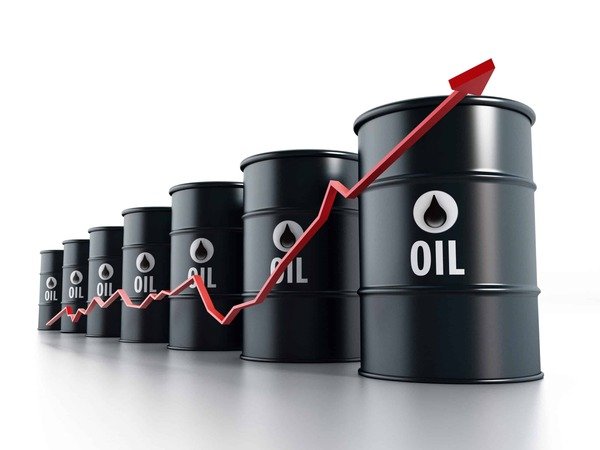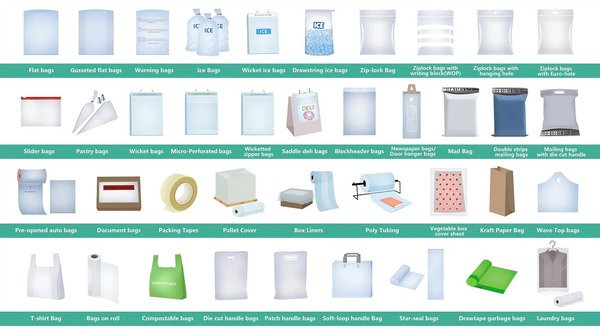
Have you noticed plastic bags costing more at the checkout? It's a bit puzzling when something so common starts hitting the wallet harder. Let's explore the main reasons behind this change.
Plastic bags are more expensive mainly due to rising raw material costs, especially oil prices. New government regulations aimed at reducing plastic waste also add to the cost for consumers.
The price of crude oil is a big factor. Plastic is made from byproducts of oil refining. So, when oil prices go up, the cost to make plastic also increases. This directly impacts the price of the plastic pellets that we, and other manufacturers, use to create bags. Also, many governments are now taking steps to control plastic pollution. This includes new taxes on single-use plastic bags or rules that force stores to charge for them. These policies aim to make people use fewer plastic bags.
These factors combine to push up the final price you pay. Businesses that make or use plastic bags have to cover these increased costs. This often means the extra expense is passed on to the customer. At BagMec®, while we focus on making efficient machines like our T-Shirt Bag Making Machines (priced $17,000-$32,000), we see how material costs affect our clients' overall expenses.
How do rising oil prices affect plastic bag costs?
Oil is a basic ingredient for most plastics. So, if oil gets more expensive, plastic bags will too. It's a direct link.
Higher crude oil prices lead to increased costs for producing plastic resins, like polyethylene. Since these resins are the primary material for plastic bags, the bags become more expensive to make and buy.

The Journey from Crude Oil to Plastic Bag
The process starts with crude oil. Refineries process this oil. One of the products from refining is naphtha. Naphtha is then used to create monomers, like ethylene. These monomers are then polymerized to make plastic resins, such as polyethylene (PE) or polypropylene (PP). These resins, in pellet form, are what we feed into our bag-making machines. For example, our Food package bag machines, priced between $30,000 and $68,000, are designed to work with LDPE, HDPE, and PP films. If the cost of these pellets goes up, the cost to produce each bag rises.
Price Volatility and Its Impact
The price of crude oil can change a lot. Global events, supply and demand, and geopolitical factors all play a part. When oil prices are high, manufacturers of plastic resins pay more. They pass these higher costs on to companies that make plastic products, including bags. This means the base cost of making a simple shopping bag or a more specialized Heavy duty bag (our machines for these range from $12,000.00-23,000.00) increases.
Table: Oil Price vs. Plastic Resin Cost (Illustrative)
Here’s a simple way to see how oil prices can affect resin costs. These are just for illustration.
| Crude Oil Price (per barrel) | Polyethylene Resin Cost (per ton, approx.) | Impact on Bag Manufacturing Cost |
|---|---|---|
| $60 | $900 - $1,000 | Baseline |
| $80 | $1,200 - $1,300 | Noticeable Increase |
| $100 | $1,500 - $1,600 | Significant Increase |
As you can see, a jump in oil prices can significantly raise the cost of the primary material for plastic bags. At BagMec®, our "Smart Tension Control" technology helps ensure consistent film feeding, which can reduce waste. Still, the input material cost is a big factor for our customers.
What role do government regulations play in bag prices?
Governments around the world are trying to reduce plastic waste. Their new rules and laws often make plastic bags more expensive.
Many governments have introduced measures like taxes on single-use plastic bags or mandatory charges by retailers. These policies directly add to the cost you pay for a bag at the store.
Let's look closer at how these government actions affect prices.
Types of Regulations
Governments use several methods to control plastic bag use:
- Bans: Some areas completely ban certain types of single-use plastic bags. This forces businesses and consumers to find alternatives.
- Levies/Taxes: A direct tax can be put on each plastic bag. This money might go to environmental programs. The tax makes the bag more expensive.
- Mandatory Charging: Retailers are required by law to charge a fee for each plastic bag given to customers. This is common in many European countries and, as mentioned in some news, Japan started this in 2020. The goal is to make people think twice before taking a new bag.
The Goal: Reducing Environmental Impact
The main idea behind these rules is to protect the environment. Plastic bags can cause a lot of pollution if they are not disposed of correctly. By making bags more expensive, governments hope people will:
- Use fewer new plastic bags.
- Bring their own reusable bags when shopping.
- Support a shift towards more sustainable packaging options.
Impact on Consumers and Businesses
For consumers, the most direct impact is paying more for bags or changing habits to avoid the cost. For businesses, it can mean a few things. They might need to absorb some costs, or they might need to source different types of bags that comply with new rules. This could involve investing in machines that produce thicker, reusable bags or bags made from biodegradable materials. For instance, our clients who purchase Lamination Pouch Making Machines (priced $34,000-$67,000) or Side Sealing Bag Machines ($10,500-$18,500) might adapt their production to meet these new demands. Some businesses also explore paper bags as an alternative, and companies like nova-mech.com have noted a shift towards paper bag machines due to pollution concerns.
Are there other factors making plastic bags more expensive?
Yes, oil prices and government rules are big reasons. But other things also add to the cost of plastic bags these days.
Beyond raw materials and regulations, issues like global supply chain disruptions, increased shipping and logistics expenses, higher labor costs, and the development of eco-friendly alternatives also contribute to higher plastic bag prices.
Let's explore these additional factors.
Supply Chain Disruptions
Recent global events have caused a lot of problems for supply chains. This means it can be harder and more expensive to get raw materials, components for machines, and even finished goods. These disruptions can lead to temporary shortages or higher prices for the plastic resins used in bags. At BagMec®, we manage our production facility with 12+ specialized lines carefully, but global supply issues can affect anyone.
Increased Logistics and Transportation Costs
The cost of moving goods around the world has gone up. Fuel prices for ships and trucks are higher. There have been shortages of shipping containers. These increased logistics costs add to the final price of almost everything, including the plastic pellets shipped to factories and the finished bags shipped to stores. Our standard delivery is 45 days, but these factors can sometimes make things tricky.
Labor Costs
In many manufacturing regions, labor costs have been rising. Higher wages and better working conditions are good for workers, but they also add to the cost of production. This can make finished goods, like plastic bags, a bit more expensive.
Investment in Sustainable Alternatives and Advanced Machinery
There's a big push for more environmentally friendly packaging. Developing new biodegradable plastics or setting up recycling systems costs money.
- Research and Development (R&D): Creating new, truly compostable or biodegradable plastics requires significant R&D investment. These materials often start out more expensive than traditional plastics.
- Specialized Machinery: Producing bags from these new materials or creating more complex, reusable bags might need different or upgraded machinery. For example, a Wicketer Bread Bag Machine, which we price from $69,000 to $88,000, is a specialized piece of equipment. Similarly, producing paper bags, as offered by some manufacturers like those found on paper-bag-machine.com, involves different machinery and material costs. Machine suppliers listed on platforms like indiamart.com also cater to varied production needs, reflecting the diversity in the market.
At BagMec®, we are committed to future-ready technology and sustainability. Our machines are designed for compatibility with materials like biodegradable PLA and feature energy-saving servo motors. However, the initial costs associated with some of these advanced and eco-friendly solutions can be higher, which can be reflected in product pricing down the line.
Conclusion
So, plastic bags cost more due to higher oil prices, new government rules to cut waste, and other global economic pressures like shipping and labor costs. It's a mix of factors.






